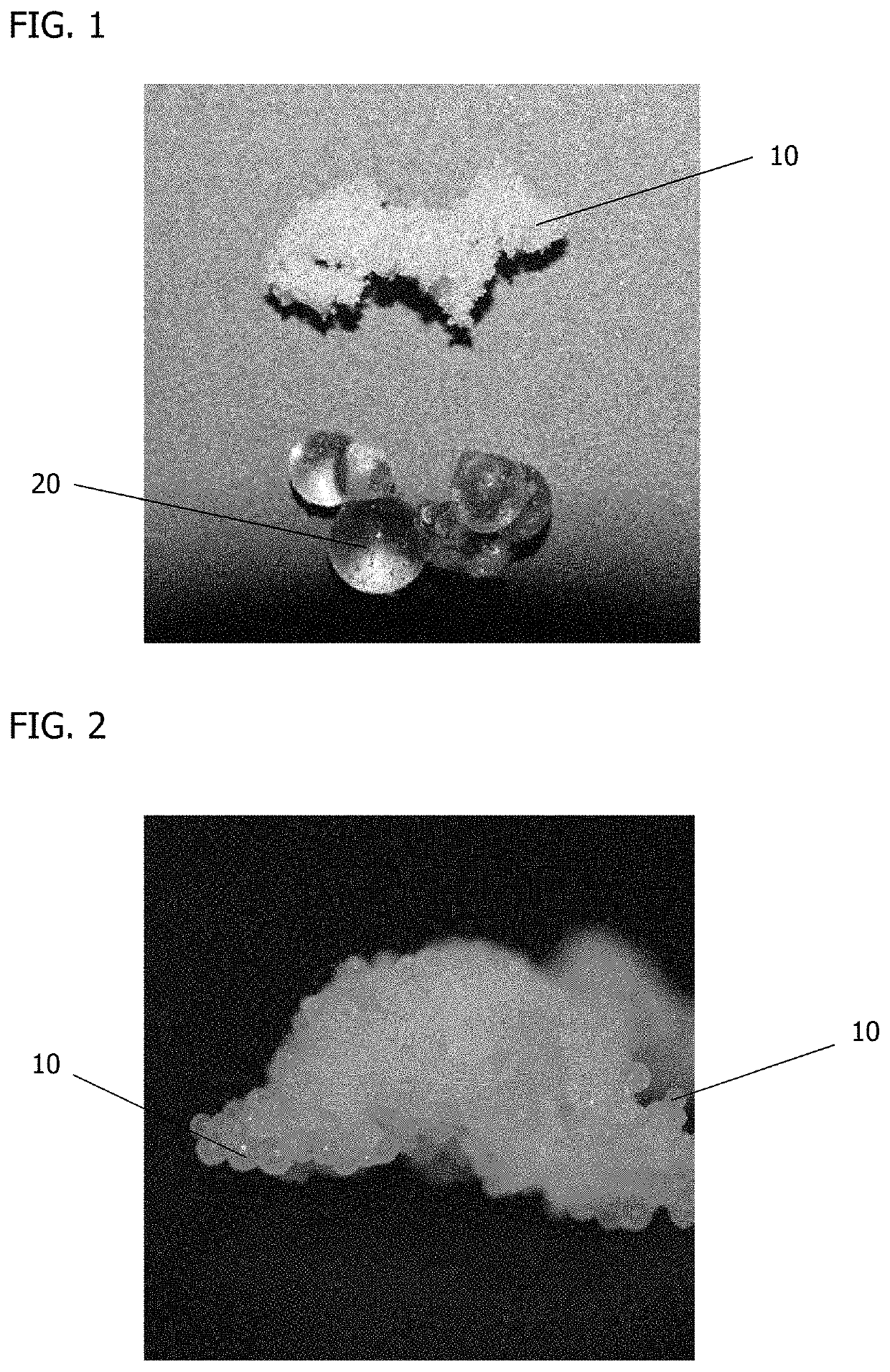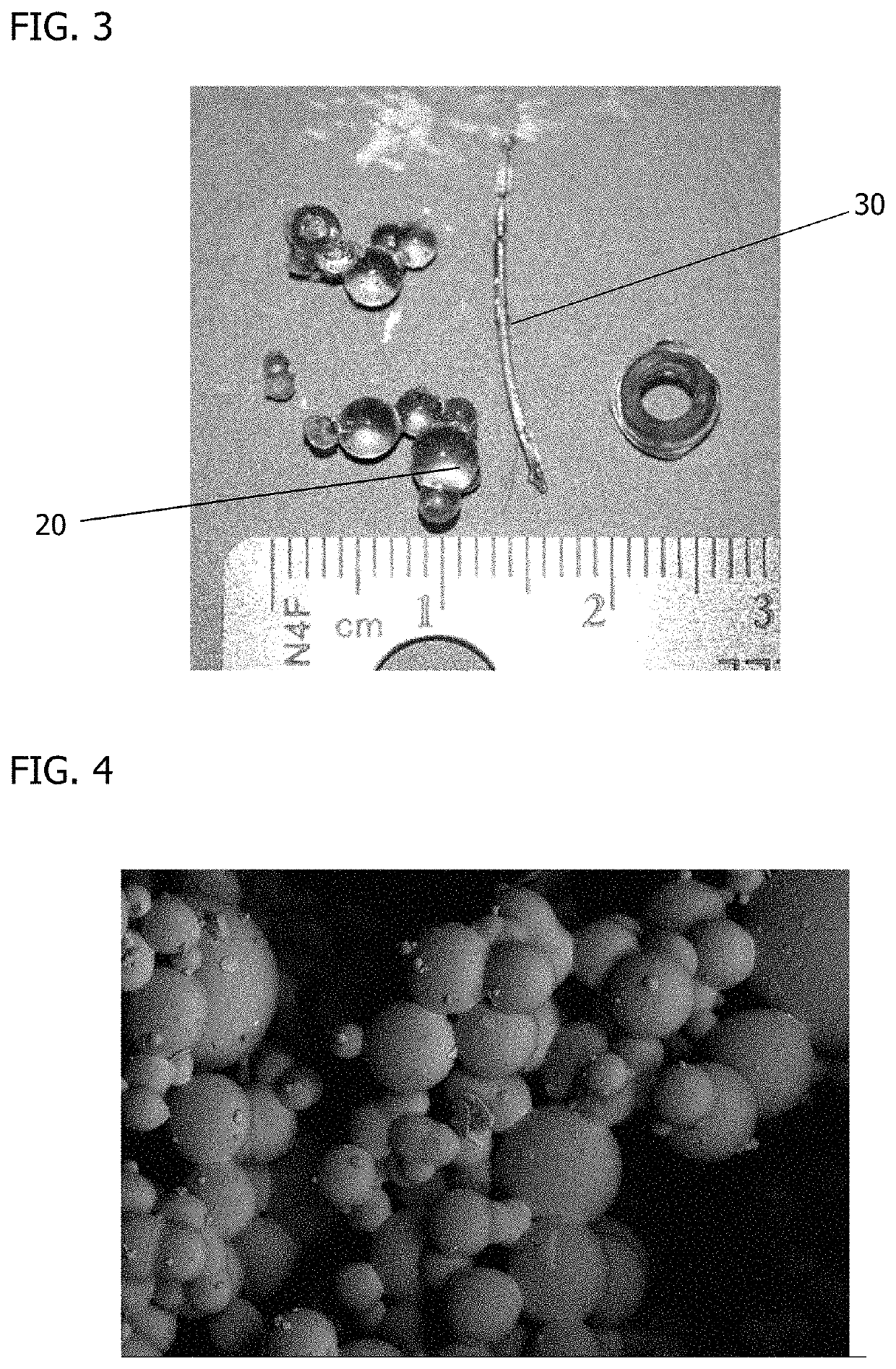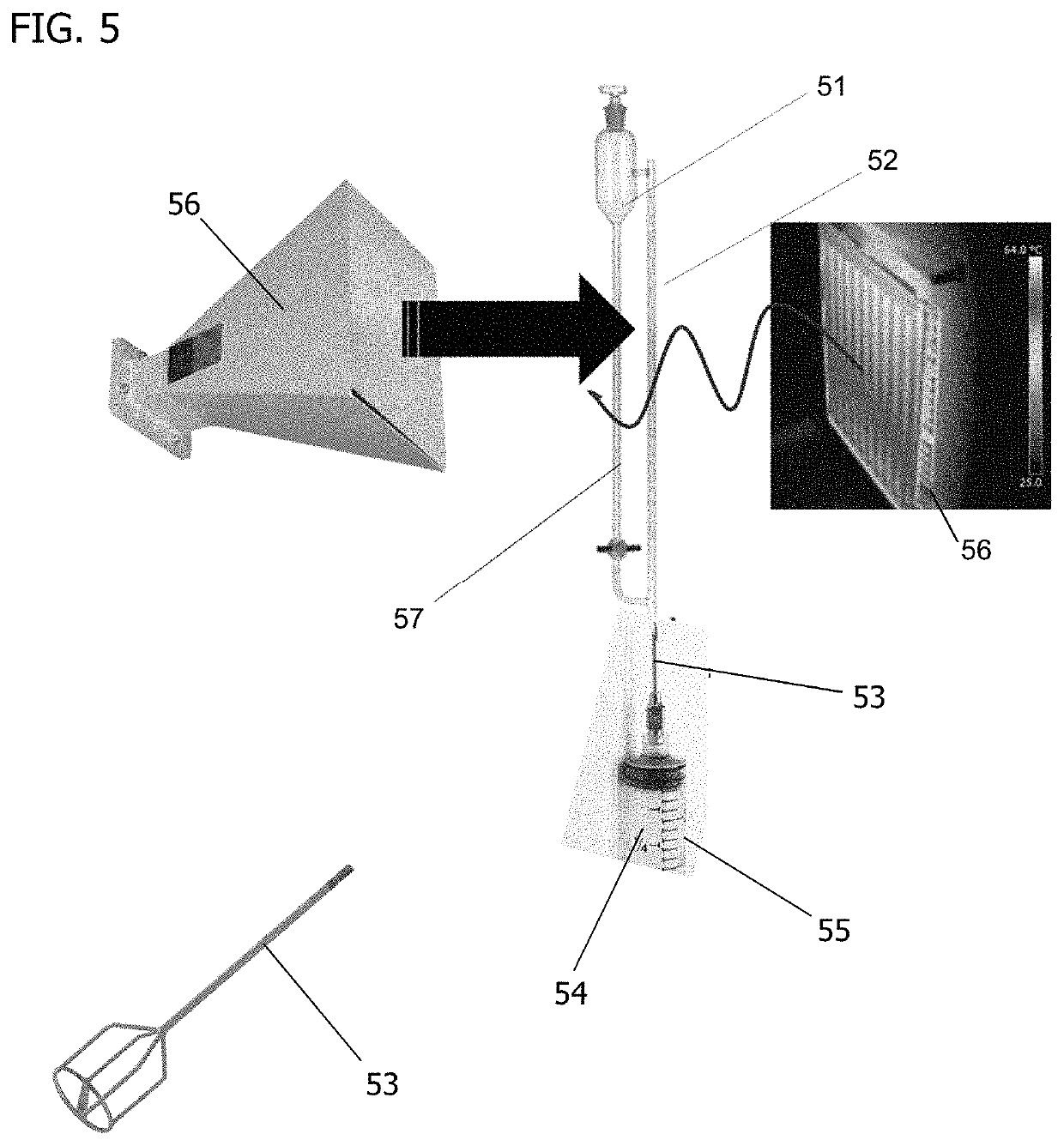Cured biodegradable microparticles and scaffolds and methods of making and using the same
a biodegradable and scaffold technology, applied in the field of cured configurations of biodegradable polymeric elastomers, can solve the problems of difficult formulation of lactide and glycolide microparticles, and the difficulty of elastomer processing into shapes without molds
- Summary
- Abstract
- Description
- Claims
- Application Information
AI Technical Summary
Benefits of technology
Problems solved by technology
Method used
Image
Examples
example 1
[0131]200 mL of heavy mineral oil was heated to 130° C. (266° F.) in a reactor vessel under stirring with a magnetic stir bar (400 RPM), and a vacuum (10 torr) was applied to the mineral oil to remove dissolved gases. The vacuum was removed and 2 mL of molten PGS was slowly added directly to the hot mineral oil under stirring through a syringe with an 18-gauge (18 G) needle. After the PGS resin was added, the 10-torr vacuum was reapplied and the PGS microparticles were maintained at 130° C. (266° F.) and under stirring to cure the PGS. After 20 hours, the heat, vacuum, and stirring were removed. The cured PGS microparticles were then washed and collected. FIG. 1 shows microparticles 10 and 20 formed by Example 1 using different shear rates resulting from different sized stir bars (lower shear rates result in larger sized microparticles).
example 2
[0132]200 g of heavy mineral oil was mixed with 6 g of monolaurin and heated to 130° C. (266° F.) in a reactor vessel under stirring with a magnetic stir bar (400 RPM), and a vacuum (10 torr) was applied to the mineral oil and monolaurin mixture to remove dissolved gases. The vacuum was removed and 1 mL of molten PGS was slowly added to the hot mineral oil under stirring through a syringe with an 18 G needle. After the PGS resin was added, the 10-torr vacuum was reapplied and the PGS microparticles were maintained at 130° C. (266° F.) and under stirring to cure the PGS. After 20 hours, the heat, vacuum, and stirring were removed. The cured PGS microparticles were then washed and collected. FIG. 2 shows the microparticles 10 formed by Example 2.
example 3
[0133]PGS microspheres were formed by emulsion with alginate as an emulsifying agent. PGS resin at 50 wt % solubilized in 99% isopropyl alcohol was added dropwise to an aqueous solution of 1 wt % alginate with stirring of the alginate solution at the time of addition to form uncured PGS microspheres. The PGS-microsphere-containing alginate solution was added dropwise to a 90 millimolar (mM) CaCl2 solution to rapidly ionically gel the alginate into spheres containing the uncured PGS microspheres. The alginate spheres were washed multiple times with deionized water to remove the excess calcium chloride. The deionized water was then removed, leaving hydrated PGS-alginate spheres.
[0134]The hydrated PGS-alginate spheres were then frozen. The frozen PGS-alginate spheres were then lyophilized to remove the water. The dry PGS-alginate spheres were then microwave-cured for two minutes at an intermediate power in an inverter microwave oven to crosslink the PGS microspheres, thereby forming cu...
PUM
| Property | Measurement | Unit |
|---|---|---|
| size | aaaaa | aaaaa |
| weight average molecular weight | aaaaa | aaaaa |
| weight average molecular weight | aaaaa | aaaaa |
Abstract
Description
Claims
Application Information
 Login to View More
Login to View More - R&D
- Intellectual Property
- Life Sciences
- Materials
- Tech Scout
- Unparalleled Data Quality
- Higher Quality Content
- 60% Fewer Hallucinations
Browse by: Latest US Patents, China's latest patents, Technical Efficacy Thesaurus, Application Domain, Technology Topic, Popular Technical Reports.
© 2025 PatSnap. All rights reserved.Legal|Privacy policy|Modern Slavery Act Transparency Statement|Sitemap|About US| Contact US: help@patsnap.com



